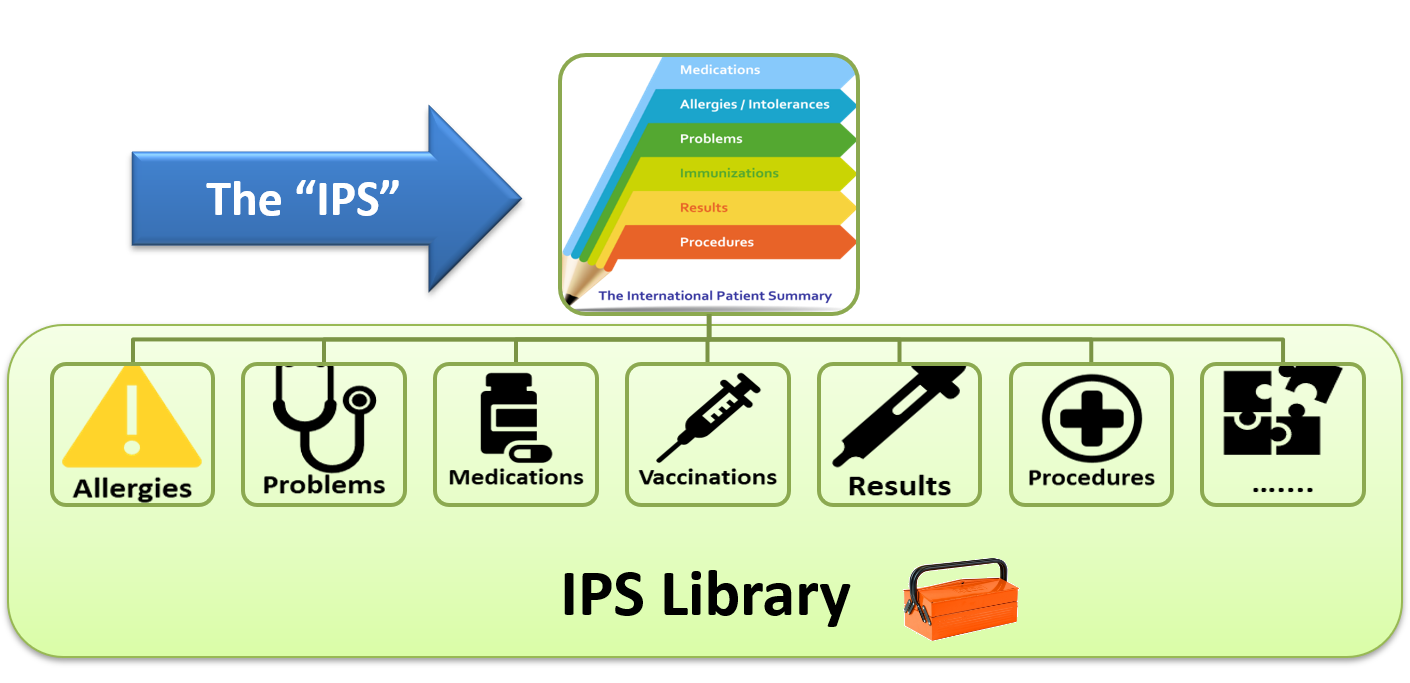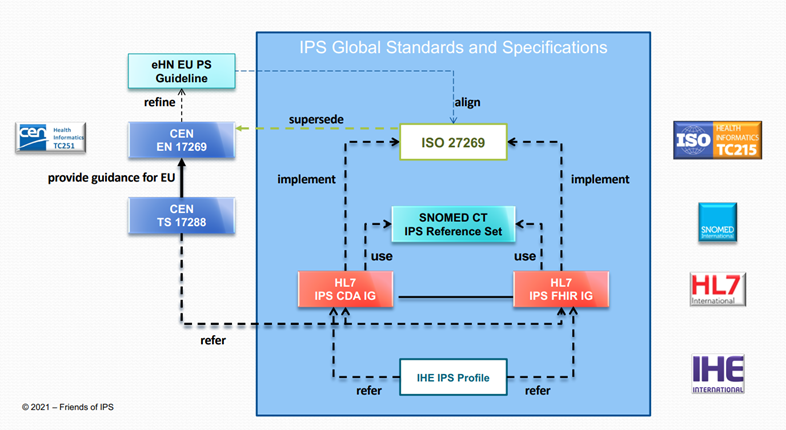
By John D'Amore, MS; Giorgio Cangioli, PhD; and Rob Hausam, MD
Improving a patient’s ability to share data with caregivers no matter where they reside has been a priority of HL7 since its inception. As the global adoption of digital health records has dramatically accelerated over the past decade, cross-border data exchange has begun in earnest using HL7 standards, such as the Clinical Document Architecture (CDA®) and Fast Healthcare Interoperability (FHIR®). Here we review recent advances of the International Patient Summary (IPS), a standard that promotes clinical data sharing by patients and clinicians both within and across borders.
Background on the IPS
The IPS is an ecosystem of standards emerging from collaboration across multiple standards development organizations (SDOs), including HL7 International, the European Committee for Standardization (CEN), Integrating the Healthcare Enterprise (IHE), ISO and SNOMED International. The Joint Initiative Council (JIC), representing nine major SDOs globally, recognized IPS as a key project beginning in 2015. The past six years have been packed with activity in the IPS standard development.
HL7 work groups have developed, balloted and published two implementable specifications of the IPS based on the CDA (HL7 CDA IPS STU) and the FHIR Release 4 (HL7 FHIR IPS STU) standards. Both guides implement the same domains of clinical data (allergies, medications and problems required) originally advanced by CEN Health informatics and now carried forward by the ISO 27269 standard for the IPS dataset.
SNOMED International has made a subset of SNOMED CT codes, known as the Global Patient Set, freely available for use within IPS or other specifications. HL7 and IHE implementation guides and profiles have provided guidance for IPS implementations and Connectathons (held by HL7, IHE and others) that test and provide feedback to improve the IPS standards. The World Health Organization (WHO) has launched a COVID-19 documentation standard with dependency on parts of the IPS. The Global Digital Health Partnership has over 30 members collaborating on five workstreams, one of which focuses on interoperability and the IPS. The G7 Health Ministers have also made a commitment beginning in 2021 to work toward adopting the IPS.
Together, these efforts have provided an incredible and rich environment that supports advancement of the IPS standards. Several of the SDOs contributing to the IPS standard are shown below, with the two HL7 IPS publications shown in red. (Credit for figure below given to Robert Stegwee. Used with copyright permission).

IPS Maturity and Adoption
The IPS is still early in its adoption and implementation worldwide, but the following discussion and diagram provide an overview for how both HL7 IPS guides may be used in the coming years:
- CDA-based IPS (last HL7 publication: October 2018):
- The exchange of CDA Patient Summaries compliant with the IPS datasets (though not yet the full IPS standard) has reached production usage within European nations participating in the MyHealth@EU (formerly eHDSI). While not all nations have migrated to the HL7 CDA IPS as of today, references are now included in 2021 guidance. Additional nations are planned to adopt a CDA patient summary standard in the coming years (Image from 2021 eHealth Network Meeting):

- While the CDA based IPS adoption is likely to be implemented in some regions for years to come, other nations are beginning their IPS journey with FHIR-based implementations
- The exchange of CDA Patient Summaries compliant with the IPS datasets (though not yet the full IPS standard) has reached production usage within European nations participating in the MyHealth@EU (formerly eHDSI). While not all nations have migrated to the HL7 CDA IPS as of today, references are now included in 2021 guidance. Additional nations are planned to adopt a CDA patient summary standard in the coming years (Image from 2021 eHealth Network Meeting):
- FHIR-based IPS (last HL7 publication May 2020)
- Testing of IPS FHIR document exchange has been performed through multiple Connectathons. Pilot servers have been developed, and work is continuing to create more reference implementations
- IPS relies on the Composition Resource. While not yet at a normative level of maturity, “Composition” is the basic structure from which FHIR Documents – immutable bundles with attested narrative – are built
- The IPS Composition specifies a care summary snapshot (as a FHIR document). This snapshot could be saved to a patient device or in a repository
- Several European projects declared the adoption and the piloting of the FHIR IPS. Re-use of individual IPS resources have been referenced through project work of the WHO and Taiwan. Active work to adapt and implement FHIR-based IPS is underway in New Zealand, Canada and other nations
Another major initiative within HL7 that has spun off the original IPS FHIR work is International Patient Access (IPA). IPA describes how an application acting on behalf of a patient can access information about the patient from clinical records systems using a FHIR based API. The IPA and IPS specifications have different functions: one makes provision for access to a record (IPA), and the other makes rules about the content found in the record (IPS). IPA is actively cataloging existing electronic health record (EHR) requirements and infrastructure for patient data access across borders, acknowledging the data heterogeneity that exists within different regions.
What's Next?
The IPS is maturing and growing with international momentum. It has brought together multiple SDOs and has found a home within the HL7 community as published implementation guidance. Continuing to advance reference implementations and getting nations to work through the issues of region-specific terminologies and language translation are challenges as we move toward widespread adoption of the standard, but the many benefits of cross-border data sharing will make it worth the effort. Once international travel returns as the COVID pandemic recedes, the availability of the IPS should facilitate access to and sharing of medical information even when patients are far away from their homes.
You can follow ongoing work on the IPS standard through the HL7 Patient Care Work Group, which sponsors the standard and hosts weekly calls. We also invite you to join Connectathons where IPS will continue to be further evaluated. An IPS track will be part of the January 2022 HL7 FHIR Connectathon, and if you live in a nation that participates as part of the Global Digital Health Partnership (GDHP), the GDHP also hosts Connectathons which welcome participants (please reach out to the blog authors if you are interested in participating).
Finally, the IPS project has its own website where updates, resources and links about IPS will continue to be posted. We encourage you to join the community to advance this important standard for international data sharing. We’re excited for what comes next!


